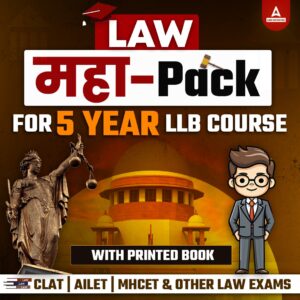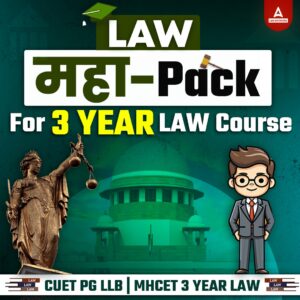The CLAT Syllabus 2026 is designed to test your reasoning and comprehension skills, which are important for studying law. While knowing some general information may help, the test mainly looks at how well you can think logically and understand different concepts.
The exam will last for 2 hours and have 120 multiple-choice questions. Each question is worth 1 mark, but there will be a 0.25 mark penalty for wrong answers. The test will cover these 5 subjects.
-
English Language
-
Current Affairs and General Knowledge
-
Legal Reasoning
-
Logical Reasoning
-
Quantitative Techniques
The CLAT 2026 UG Syllabus gives you a clear idea of what topics will be tested in each section to help you prepare.
CLAT Exam Syllabus Highlights
Candidates can view a brief CLAT 2026 Syllabus & pattern highlights here.
| Particulars | Details |
| Number of sections | 5 |
| Sections name |
English Language, Legal Reasoning, Logical Reasoning, Current Affairs, including General Knowledge, and Quantitative Techniques
|
| Types |
Multiple-choice questions
|
| Maximum Marks | 120 |
| CLAT exam duration | 120 minutes |
| Mode of exam – Offline | Offline |
| Number of questions | 120 |
| Marking scheme |
+1 mark for each correct response
– 0.25 negative marking for incorrect answer |
CLAT 2026 Subject-wise Syllabus
A brief description of all subjects and their syllabus is listed in the table below.
| CLAT 2026 Syllabus UG | ||
| Sl. No | Subject | Syllabus |
| 1 | English Language | Passage Comprehension
|
| 2 | Current Affairs and General Knowledge | Passage-based questions
Required Knowledge
|
| 3 | Legal Reasoning | Passage-based questions
|
| 4 | Logical Reasoning | Passage-based questions
|
| 5 | Quantitative Techniques | Passage/Graphs/Other Representations
Required Knowledge
|
CLAT Syllabus Weightage
| CLAT Section Wise Weightage, Marks, Number of Questions Asked | |||
| Section | Weightage (%) | Questions | Marks |
| Current Affairs, including General Knowledge | 23.33 – 26 | 28-32 | 35 – 39 |
| English Language | 18.66 – 21.33 | 22-26 | 28 – 32 |
| Logical Reasoning | 18.66 – 21.33 | 22-26 | 28 – 32 |
| Quantitative Techniques | 8.66 – 11.33 | 10-14 | 13 – 17 |
| Legal Reasoning | 23.33 – 26 | 28-32 | 35 – 39 |
| Total | 100 | 120 | 120 |
CLAT English Syllabus
The CLAT exam’s English section consists of comprehension-type passage-based questions. These thorough passage questions assess the candidate’s comprehension and linguistic skills, as well as their ability to make deductions and conclusions, summarize passages, and identify arguments and opinions.
| CLAT Syllabus 2025 – English Language | |
| Particulars |
Key Details
|
| Type of questions asked |
|
| Source |
News, journalistic sources, and non-fiction writing.
|
| Ability tested | Awareness of the following topics Contemporary events of significance from India and the world; Arts and culture; Historical events of continuing significance. International affair |
| Important Topics | Correcting Incorrect Grammar Sentences Tenses Synonyms & Antonyms Fill in the Blanks Active & Passive Voice Spotting Grammatical Errors |
| Recommended Books |
|
CLAT General Knowledge and Current Affairs Syllabus
This section of the CLAT syllabus will include comprehension-type passage-based questions from Static general knowledge and current affairs. Following the comprehension passages, there will be objective-type questions.
| CLAT UG Syllabus- General Knowledge and Current Affairs | |
| Particulars |
Important Details
|
| Type of questions asked |
Comprehension-type passage-based questions – Static general knowledge and current affairs
|
| Source material or content of passages |
News, journalistic sources, and non-fiction writing.
|
| Ability tested |
Awareness of the following topics
Contemporary events of significance from India and the world; Arts and culture; International affairs; and Historical events of continuing significance. |
| Key Topics |
National & International Affairs Schemes Science & Technology Summits & Conferences Sports Awards & Honours Arts & Culture Important Historical Events |
| Recommend Books |
Lucent’s General Knowledge and Pratiyogita Darpan
|
CLAT Legal Reasoning Syllabus
| CLAT 2026 Legal Reasoning Syllabus | |
| Particulars |
Details
|
| Type of questions asked |
|
| Content of passages |
Fact situations or scenarios involving legal matters, public policy questions, or moral philosophical inquiries.
|
| Focus area |
|
| Topics |
|
CLAT Logical Reasoning Syllabus
CLAT Logical Reasoning section will contain around 20% of the questions. These questions will be in accordance with Passages of 300 words or less. Check the details of the Logical Reasoning syllabus below.
| CLAT (UG) 2026 Syllabus – Logical Reasoning | |
| Particulars |
Details
|
| Type of questions asked |
Passage-based (300-word long) objective questions
|
| Content of passages |
Based on sets and arguments, puzzles, diagrams, and relationships
|
| Skills to be tested |
Ability to identify arguments and their premises and draw conclusions
Infer what follows from the passage and apply these inferences to new situations Ability to critically analyze patterns of reasoning and assess how conclusions may depend on particular premises or evidence Identify contradictions and equivalence, and assess the effectiveness of arguments. |
| Topics |
|
| Recommend Books |
Verbal and Non-Verbal Reasoning and Analytical and Logical Reasoning books by R.S. Aggarwal
|
CLAT UG Syllabus Subject-wise Preparation Tips
Check out the Section-wise preparation strategy for the CLAT Exam below.
CLAT UG Syllabus 2026 for English Language
The CLAT UG’s English Language portion tests a candidate’s comprehension and oral communication abilities. If you want to understand this material better, you can review the CLAT English Syllabus.
- Continue reading additional nonfiction books, novels, newspapers, etc., and make an effort to understand the sections there.
- Try to use the junior class textbooks to practice your grammar.
- By learning the definitions of the new terms you come across while studying, you may expand your vocabulary.
CLAT UG Syllabus for Legal Reasoning & Logical Reasoning
The student will need to comprehend the numerous rules and concepts provided in this section’s passage-based questions. To better understand this portion, you might review the CLAT’s Legal Reasoning Syllabus and Logical Reasoning Syllabus.
- The easiest method to master this area is to practice questions from last year’s test questions.
- Candidates may also utilize manuals and numerous other educational resources.
CLAT UG Syllabus for Current Affairs & General Knowledge
The breadth of the candidate’s knowledge of significant problems and events is tested in this section.
- Regularly read a magazine and the newspaper.
- Receiving notifications about local events may also be accomplished by subscribing to internet news portal websites.
CLAT UG Syllabus for Quantitative Techniques
Questions in this area will need a candidate to have a solid understanding of mathematics. You can review the CLAT Math Syllabus to have a better understanding of this part.
- Practice the fundamental mathematical procedures and methods.
- This portion often requires more attention from the candidates. As a result, it’s critical to prepare in advance by practicing questions from this area and developing time management skills.
CLAT Syllabus PDF Download
CLAT UG syllabus consists of subjects such as general knowledge, current affairs, legal reasoning, logical reasoning, maths, and English.
CLAT Syllabus PDF Direct link: CLAT Syllabus 2026 PDF
Best CLAT UG Books
Get the best CLAT UG book recommendations subject-wise here –
CLAT English Language Books
To prepare for the CLAT English language portion, the candidate must not only be able to read quickly but also comprehend what is written in the chapter. Here are some book suggestions to help you prepare for the exam.
- The Pearson Guide to the CLAT (English)
- Word Power Made Easy New Revised & Expanded Edition (English) by Norman Lewis
- Objective General English (English) by RS Aggarwal
- High School English Grammar & Composition (English) by PC Wren, H Martin
- High School English Grammar by Wren and Martin
Current Affairs and GK Books
Here are some books to assist you in preparing for the CLAT Current Affairs and GK section.
- Manorama Yearbook – General Knowledge
- Lucent’s General Knowledge
- Pratiyogita Darpan.
- Pearson’s Concise GK Manual
- Competition Review Yearbook.
CLAT Quantitative Techniques Books
The quantitative component for CLAT will be at the tenth level, so get plenty of experience by solving example papers and problem sets provided at the end of each chapter. Also, examine the reference books below:
- S Chand’s 30 Days Wonder for Maths
- 10th NCERT book.
- Quantitative Aptitude ebook (All Parts Solved) by RS Aggarwal.
- Maths 18 Days Wonder by S Chand
CLAT Legal Reasoning Books
Here are some publications that will help you master the CLAT Legal Reasoning Section. References include –
- Bhardwaj’s Legal Awareness and Legal Aptitude,
- LST’s Legal Reasoning Module
- National dailies such as The Hindu and The Indian Express.
- Universal’s CLAT Guide, and
- YouTube channels
CLAT Logical Reasoning Books
Here are a few reference books for CLAT logical reasoning.
MK Pandey’s Analytical Reasoning
501Challenging logical reasoning practice book.
Verbal and Nonverbal Reasoning by RS Aggarwal
A Modern Approach to Logical Reasoning by RS Aggarwal.
CLAT PG 2026 Syllabus
The syllabus of the CLAT PG 2026 exam, based on the previous year’s paper, is provided in the following table.
| Sr. No. | Subject | Syllabus |
| 1 | Constitutional Law | The Indian Constitution, Fundamental Rights, Fundamental Duties, The Supreme Court, Parliament, Committees and Commissions, Historical Amendments, Commerce, Scheduled Areas |
| 2 | Jurisprudence | Definition of Jurisprudence, Ownership and Possession, Liabilities (person and corporate), Law and Morals, Theories and Punishments, Jural Analysis |
| 3 | Administrative Law | Definition, Principles of Natural Justice, Need for Administrative direction, Statutory Provisions, Administrative Discretion and Remedies, Administrative Adjudication, Doctrine of Estoppel, Relationship between Constitutional Law and Administrative Law |
| 4 | Law of Contracts | Basic elements: Communication, Acceptance, and Revocation of Offer; Capacity and Privity of Contract; Wagering Agreements, Breach of Contract and Remedies for breach, Indemnity, Force Majeure & Doctrine of Frustration |
| 5 | Torts | Origin of Law of Torts in India, Definition, Criticism of Winfield, Tortious Liability, Several and Independent Tortfeasors, General Defences, Act of God & Private Defence, Strict and Absolute Liability, Negligence, Defamation, Consumer Protection |
| 6 | Criminal Law | Introduction, Criminal Courts in India, Stages of Trial, Plea, Bargaining, Bail, Vitiation of Proceedings, Inherent Power |
| 7 | Property Law | Outline, Types of Properties, Concept of Sale, Lease, Mortgage, Exchange, Gift, Will |
| 8 | Public International Law | Overview, Sources, Treaties, International Organizations, State Recognition, State Succession, Human Rights, Law of the Sea, Air and Space, Settlement of Disputes |
| 9 | Environmental Law | The Water (Prevention and Control of Pollution) Act 1974, The Air (Prevention and Control of Pollution) Act 1981, The Environment (Protection) Act 1986
The National Environment Tribunal Act, 1955, Indian Forest Act 1927, The Forest (Conservation) Act, 1980, The Wildlife (Protection) Act, 1972, Public Liability Insurance Act, 1991, Recognition of Forest Rights Act 2006, International Environment Law |
| 10 | Labour and Industrial Law | Concept of Industrial Relations, Industrial Relations Code 2020, Code on Social Security 2020, Code on Occupational Safety, Health and Working Conditions 2020, Code on Wages 2020, Industrial Disputes Act, The Factories Act, 1948, The Standing Orders Act, Recent amendments in Labour Laws |
CLAT PG Syllabus PDF
The CLAT PG (Common Law Admission Test for Postgraduate) syllabus is all about the understanding of various legal disciplines. It covers Constitutional Law, Jurisprudence, Administrative Law, Contract Law, Torts, Family Law, Criminal Law, Property Law, Company Law, Public International Law, Tax Law, Environmental Law, and Labour & Industrial Law. Additionally, the syllabus involves contemporary legal issues and the application of law in practical scenarios.
Preparing for the UG-CLAT 2026
The Consortium will provide study materials for UG-CLAT 2026, such as:
- Guides and sample questions
- Model question papers
- Practice materials for each subject
Once you apply, you’ll get access to a platform with these materials and your scores from practice tests. The Consortium will also hold online sessions with experts to help you prepare.
Make sure to stay updated with the news by reading good newspapers. For math, practice with books or study materials for your level.

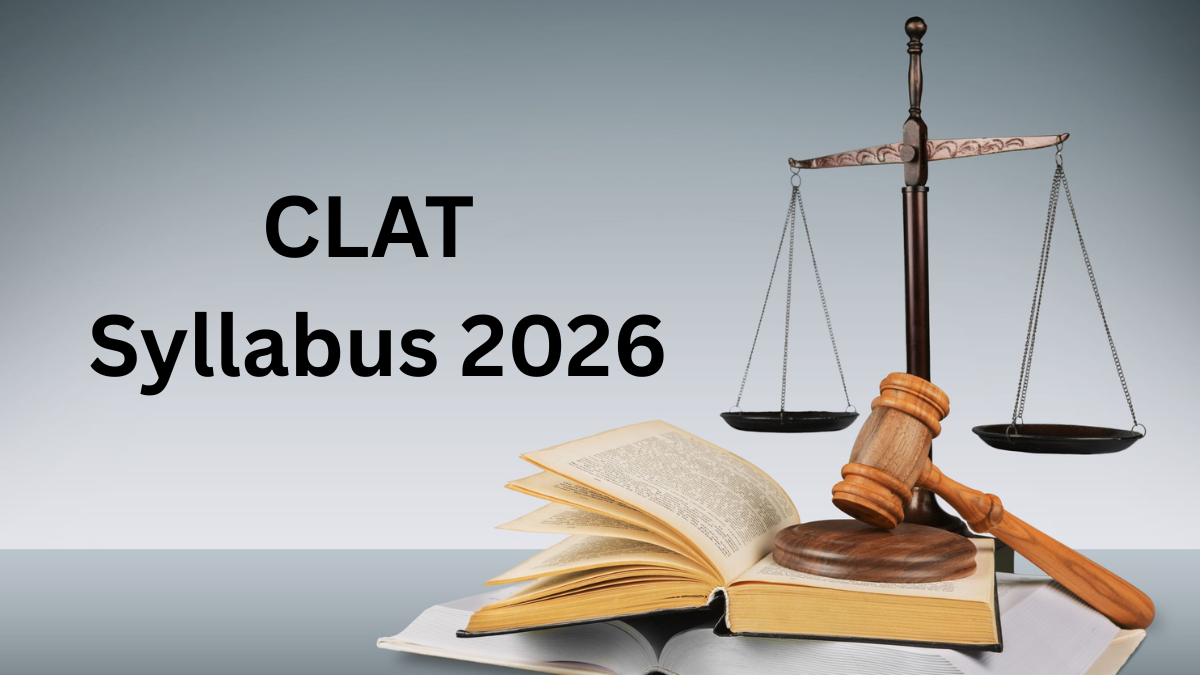







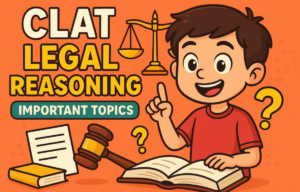 CLAT Legal Reasoning Important Topics 20...
CLAT Legal Reasoning Important Topics 20...
 CLAT Books 2026: Check Subject-wise Best...
CLAT Books 2026: Check Subject-wise Best...
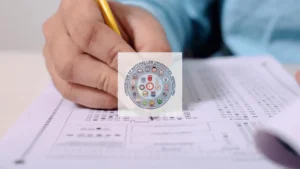 CLAT Previous Year Question Papers, Down...
CLAT Previous Year Question Papers, Down...
